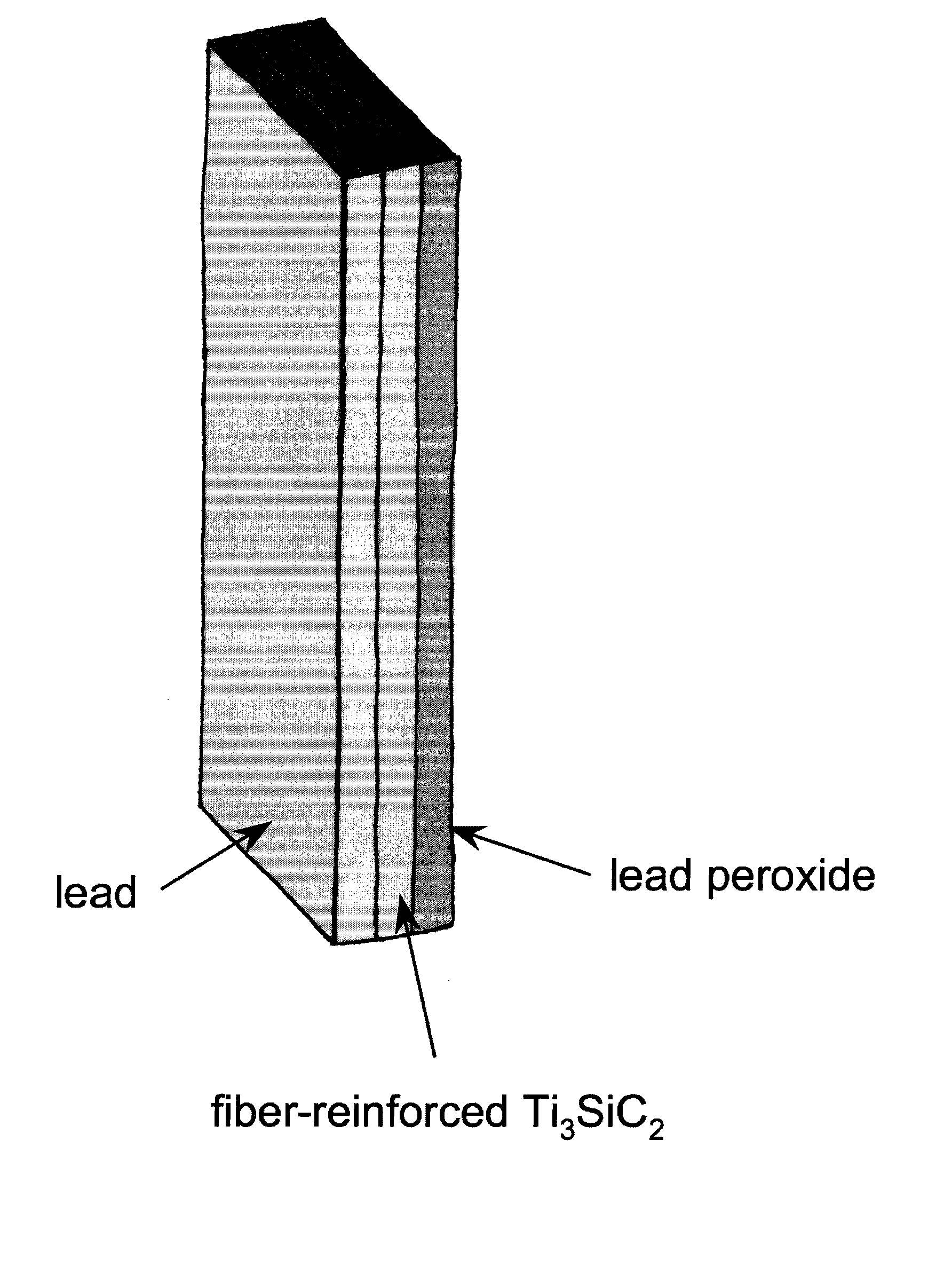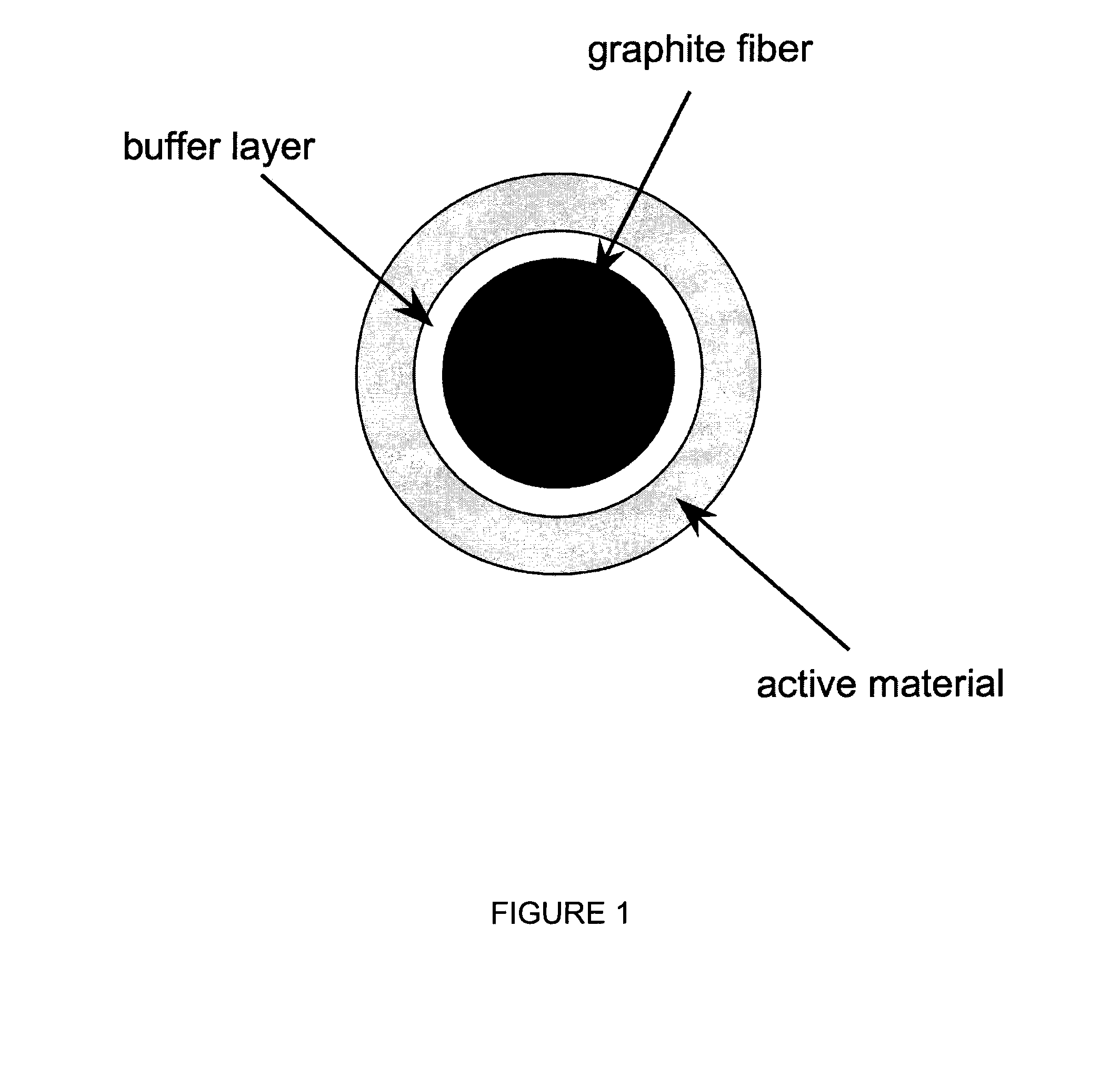Lightweight, Durable Lead-Acid Batteries
a lead-acid battery, lightweight technology, applied in the manufacture of final products, cell components, coatings, etc., can solve the problems of low specific energy of lead-acid batteries, limited use of electric and hybrid-electric vehicle applications, and corrosion between the interface of lead peroxide active materials and grid materials, so as to reduce weight, improve durability, and reduce the effect of weigh
- Summary
- Abstract
- Description
- Claims
- Application Information
AI Technical Summary
Benefits of technology
Problems solved by technology
Method used
Image
Examples
examples
[0042]The following Examples have been presented in order to further illustrate the invention and are not intended to limit the invention in any way.
[0043]A buffer layer was synthesized onto graphite fibers. FIG. 3 shows photographs of Ti2PbC synthesized onto graphite fiber. An X-ray diffraction pattern revealed the presence of Pb, Ti2PbC and Pb—Ti compounds (see FIG. 4.) The photographs of FIG. 5 show an inner layer next to the carbon fiber surface consisting of an intimate mixture of fine-grained (20-100 nm) TiC+Ti(Pb)C (Ti:Pb=3:1). The arrows point to several Ti(Pb)C crystals. The photographs of FIG. 6 show a columnar outer layer of TiC+Ti(Pb)C (Ti:Pb=3:1) and an inner layer next to the carbon fiber surface of TiC+Ti(Pb)C (Ti:Pb=3:1). FIG. 7 shows the electrochemical performance of Pb—Ti—C compounds.
[0044]A battery containing PbO2-coated Ti3SiC2 was prepared. The charge / discharge of the battery containing PbO2-coated Ti3SiC2 is shown in FIG. 8. Both metallic lead and lead peroxid...
PUM
| Property | Measurement | Unit |
|---|---|---|
| thickness | aaaaa | aaaaa |
| diameter | aaaaa | aaaaa |
| density | aaaaa | aaaaa |
Abstract
Description
Claims
Application Information
 Login to View More
Login to View More - R&D
- Intellectual Property
- Life Sciences
- Materials
- Tech Scout
- Unparalleled Data Quality
- Higher Quality Content
- 60% Fewer Hallucinations
Browse by: Latest US Patents, China's latest patents, Technical Efficacy Thesaurus, Application Domain, Technology Topic, Popular Technical Reports.
© 2025 PatSnap. All rights reserved.Legal|Privacy policy|Modern Slavery Act Transparency Statement|Sitemap|About US| Contact US: help@patsnap.com



